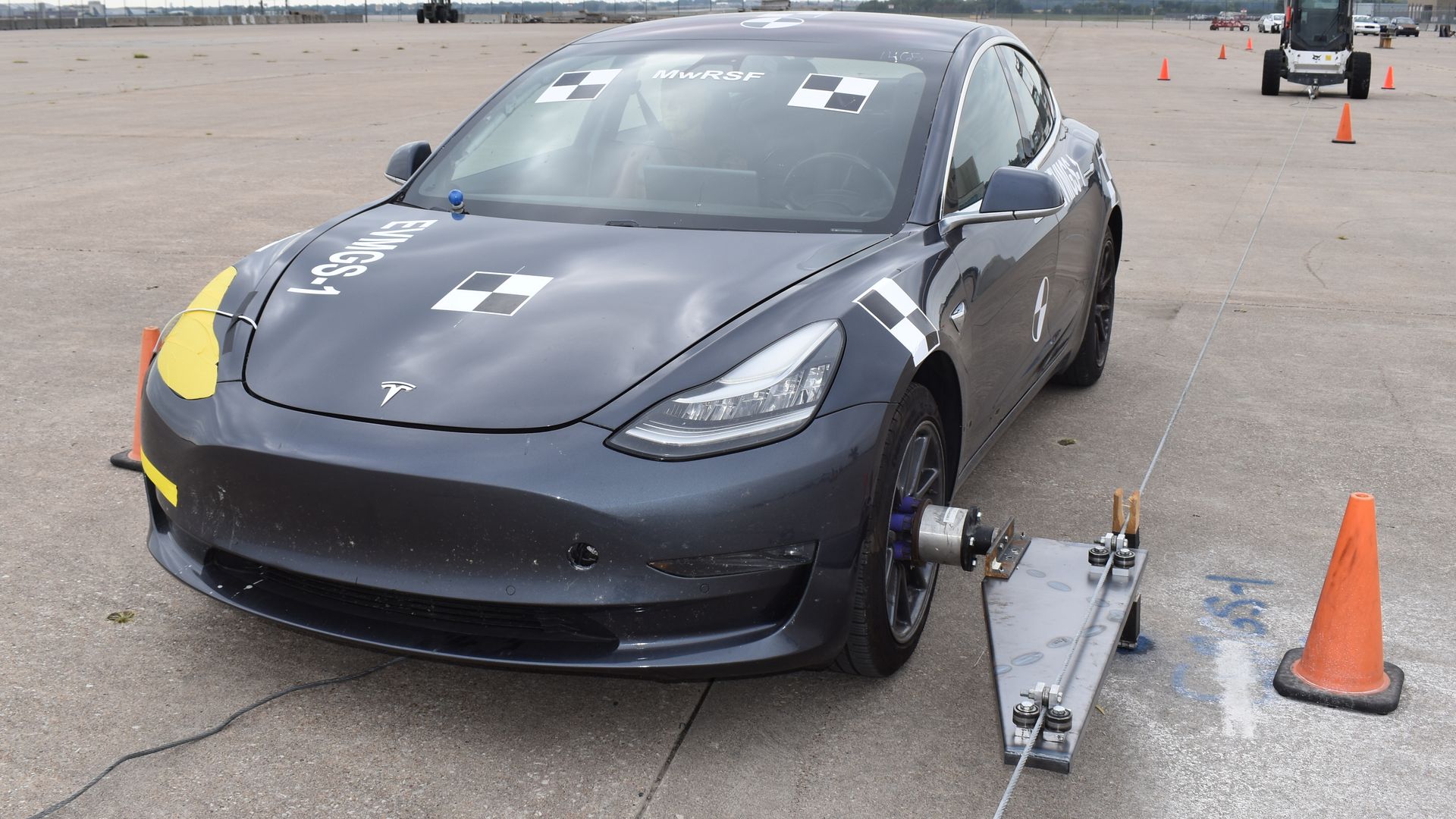
[JACK ALYMER]
GUARDRAILS AREN’T LIVING UP TO THE NAME. THE REASON: HEAVIER ELECTRIC VEHICLES. AND NOW MANY ARE CALLING FOR A NATIONWIDE UPDATE.
ON AVERAGE, EVS WEIGH ABOUT 30 PERCENT MORE THAN GAS-POWERED CARS. WHICH MEANS THOSE PROTECTIVE BARRIERS HAVE TO HOLD UP AGAINST COLLISIONS INVOLVING THOUSANDS OF EXTRA POUNDS. SOMETHING THEY WEREN’T BUILT TO DO.
CODY STOLLE – ASSISTANT DIRECTOR AT THE UNIVERSITY OF NEBRASKA’S MIDWEST ROADSIDE SAFETY FACILITY: “These full-scale crash tests indicated that we do need to make some redesigns and retrofits to our systems to better prepare for these gasoline vehicle transitions to electrical vehicles in the future.”
[JACK ALYMER]
STOLLE AND HIS TEAM HAVE BEEN IDENTIFYING ISSUES WITH GUARDRAILS, AIMING TO FIND A SOLUTION.
CODY STOLLE: “In preparation for our infrastructure, we’re going to have to accommodate the fact that future vehicles are likely going to continue to be heavier than today’s vehicles. And as they get heavier, we’re going to have to have infrastructure that adapts and reacts to those changes in weight.”
[JACK ALYMER]
BACK IN THE EARLY 2000s, AMERICANS STARTED DRIVING HEAVIER VEHICLES, LIKE PICKUP TRUCKS AND SUVS, AT A FASTER RATE THAN EVER BEFORE.
THESE VEHICLES EXPOSED CRACKS IN THE NATION’S GUARDRAIL NETWORK.
CODY STOLLE: “The Midwest guardrail system was developed here at the Midwest roadside safety facility at the University of Nebraska Lincoln in response to those failures we observed in full-scale crash testing and in service performance data.”
[JACK ALYMER]
THIS RESEARCH GROUP HAS ALSO WORKED ON DESIGNING THE SAFETY BARRIERS AT HIGH-SPEED RACE TRACKS USED BY NASCAR.
CODY STOLLE: “Now, we’re going to continue that trend by evaluating with a whole new vehicle class, while still retaining our compatibility across a broad range of impacting vehicles.”
[JACK ALYMER]
IN THEIR EFFORT TO DESIGN A GUARDRAIL BETTER SUITED TO THE FUTURE OF AMERICAN ROADWAYS, THE TEAM CRASH TESTED TWO DIFFERENT EVS ON THE CURRENT BARRIER SYSTEM. A 7,000 POUND RIVIAN R1T TRUCK AND A 4,000 POUND TESLA MODEL 3 IN BOTH CASES, AS YOU CAN PROBABLY TELL, THE GUARDRAILS FAILED TO DO THEIR JOB.
CODY STOLLE: “The biggest concern in both of these two crashes is the exposure of the occupants of those vehicles to whatever the guardrail was intended to shield and protect. If those features are, for example, trees, or bridge column supports or geographic features like rivers or lakes, the occupants of those vehicles may be exposed to those hazards because the guardrail system did not redirect those vehicles back to the roadway.”
[JACK ALYMER]
TIME IS RUNNING OUT TO FIX THE PROBLEM BEFORE IT BECOMES TOO WIDESPREAD.
LAST YEAR, EVS MADE UP JUST ABOUT 7 PERCENT OF THE TOTAL U.S. VEHICLE MARKET.
BUT COME 2026, EXPERTS PREDICT ELECTRIC VEHICLES COULD EXCEED A QUARTER OF TOTAL U.S. AUTO SALES.
CODY STOLLE: “Over time as we see more battery electric vehicles, we may begin to see more types of crashes that are consistent with what we evaluated … the good news is we’re going to plan ahead. This is the earliest step in a broad outcome to evaluate all of our hardware to prepare for what’s coming. And because we can prepare ahead, we can prevent those types of severe outcomes.”
[JACK ALYMER]
THE TEAM HOPES THEIR WORK WILL LEAD TO SAFER ROADS FOR TOMORROW’S DRIVERS.
CODY STOLLE: “It’s something of a divine godsend to put us in the right place at the right time to answer a question and save lives.”







